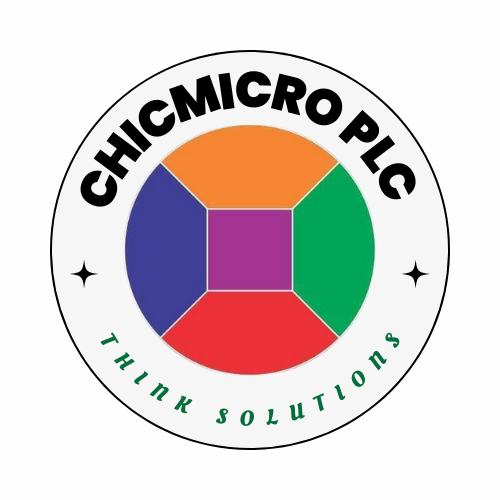Introduction to Blockchain Technology
Blockchain technology has emerged as one of the most revolutionary advancements in the digital landscape, characterized by its core principles of decentralization, security, and transparency. At its essence, a blockchain is a distributed ledger that records transactions across multiple computers in a way that the registered information cannot be altered retroactively without the consensus of the network. This feature significantly enhances the integrity of data and reduces the risks associated with centralized databases.
The structure of a blockchain consists of a series of blocks, each containing a collection of transaction data, a timestamp, and a cryptographic hash of the previous block. This chaining of blocks securely links each piece of information, forming an immutable record. Each node in the network is equipped with a copy of the entire blockchain, making it nearly impossible for malicious actors to manipulate the data without being detected. The decentralized nature of blockchain fosters trust among participants, which is crucial for various applications ranging from cryptocurrency transactions to supply chain management.
Historically, blockchain technology was first popularized by Bitcoin, introduced in 2009 by an anonymous entity known as Satoshi Nakamoto. This initial application demonstrated the potential for a digital currency that could operate without a central authority. Since then, blockchain has evolved significantly, gaining traction in diverse sectors such as finance, healthcare, and logistics. Today, organizations are exploring blockchain to enhance their operational efficiency and improve accountability in processes that require transparency.
In the current digital landscape, the significance of blockchain technology continues to expand. Its ability to provide a secure and verifiable method for transactions has captured the attention of industries looking to innovate. As we further delve into the future of blockchain technology, it is essential to acknowledge its foundational principles and explore the potential trends, challenges, and opportunities that lie ahead.
Current Trends in Blockchain Technology
Blockchain technology continues to evolve, showcasing significant advancements across various sectors. One of the most prominent trends is the movement towards improved scalability. Traditional blockchains often face challenges in handling a high volume of transactions efficiently. However, through innovations such as sharding and layer two solutions, organizations are developing systems that facilitate faster transaction speeds and reduced costs, ultimately enhancing user experience. This scalability is critical for mainstream adoption, particularly in applications demanding high throughput.
Interoperability is another crucial trend garnering attention. As numerous blockchain platforms emerge, the ability for these networks to communicate and share information seamlessly becomes invaluable. Projects focused on establishing cross-chain interactions are on the rise, allowing for assets and information to be transferred across different blockchain ecosystems. This trend not only promotes collaboration among developers but also creates a more unified and comprehensive blockchain landscape.
The advent of smart contracts has significantly changed the operational dynamics of blockchain technology. Automating agreements without the need for intermediaries has minimized the risks of fraud and reduced transaction costs. As more industries begin to recognize the potential of smart contracts, we expect to see further integration within sectors such as finance, healthcare, and supply chains, streamlining processes and enhancing transparency.
Furthermore, decentralized finance (DeFi) is revolutionizing how individuals engage with financial services. By leveraging blockchain’s security and transparency features, DeFi platforms are offering users access to loans, savings, and trading without traditional banking entities. This shift is indicative of a growing desire for more inclusive financial systems, attracting a diverse range of participants.
The rise of non-fungible tokens (NFTs) also represents a significant shift in our understanding of ownership and value in the digital realm. NFTs, unique digital assets verified by blockchain, have redefined concepts of art, music, and collectibles. Their ability to confer ownership rights in a decentralized manner is changing the landscape of digital assets, leading to new opportunities for creators and investors alike.
Impact on Various Industries
Blockchain technology is rapidly emerging as a transformative force across multiple industries, offering innovative solutions to long-standing challenges. In the finance sector, blockchain facilitates faster and more secure transactions by eliminating intermediaries, thereby reducing costs and enhancing transparency. For example, Ripple is leveraging blockchain to streamline cross-border payments, significantly cutting down the processing time from days to mere seconds. The decentralized nature of blockchain fosters trust among users, as all transactions are recorded on a public ledger, accessible by all parties involved.
In supply chain management, blockchain offers a method to improve traceability and accountability. Companies such as IBM have developed blockchain platforms that allow businesses to track products from origin to destination. This level of transparency is crucial in industries like food and pharmaceuticals, where any disruption can lead to severe consequences. By utilizing blockchain, organizations can ensure product authenticity, reduce fraud, and expedite recalls when necessary.
The healthcare sector is also benefiting from the adoption of blockchain technology. Medical records stored on a blockchain can be securely shared among healthcare providers, giving patients control over their data while enhancing interoperability. Organizations like Chronicled are employing blockchain to manage and secure the pharmaceutical supply chain, mitigating issues such as counterfeit drugs and ensuring compliance with regulations.
In the real estate industry, blockchain is redefining property transactions by enabling smart contracts, which automatically execute agreements once predefined conditions are met. This innovation not only reduces the burden of paperwork but also diminishes the risk of fraud. Startups like Propy are leading the way by integrating blockchain solutions into real estate transactions, making the buying and selling process more efficient and straightforward.
As blockchain continues to reshape these industries, it is evident that its potential to enhance efficiency, transparency, and trust is substantial. The ongoing exploration of various applications illustrates a promising future for blockchain technology across diverse sectors.
Regulatory Challenges and Considerations
The rapid evolution of blockchain technology has given rise to regulatory challenges that significantly impact its adoption and development. As organizations and developers seek to leverage the advantages offered by blockchain, they must navigate a complex landscape of laws and regulations that vary widely across jurisdictions. This lack of uniformity presents a considerable hurdle, influencing the pace at which blockchain applications can be deployed commercially.
In various countries, the regulatory approach towards blockchain and cryptocurrencies ranges from outright bans to encouraging innovation through supportive legal frameworks. For instance, while nations like the United States have implemented a patchwork of regulations at both federal and state levels, others such as China have imposed stringent restrictions on crypto activities. This inconsistency creates uncertainty for businesses that wish to operate globally. Developers must remain vigilant to ensure compliance with local regulations, including Know Your Customer (KYC) and Anti-Money Laundering (AML) laws, which can introduce additional complexity in blockchain projects.
Governments and international organizations are endeavoring to create cohesive frameworks that can alleviate some of these regulatory burdens. Initiatives such as the Financial Action Task Force (FATF) guidelines aim to harmonize AML and counter-terrorism financing standards across member countries. These efforts indicate a growing recognition of the need for balanced regulatory practices that both protect consumers and foster innovation in blockchain technology. Furthermore, countries like Switzerland and Malta are establishing themselves as blockchain-friendly jurisdictions, promoting regulatory clarity that attracts developers and investors.
In summary, while the regulatory landscape poses significant challenges for blockchain technology, ongoing efforts to standardize regulations may facilitate smoother implementation and adoption. The dynamic nature of regulations demands that businesses remain adaptable and well-informed to navigate this evolving environment.
Technological Challenges Ahead
The advancement of blockchain technology has been remarkable, yet it still faces several significant technological challenges that must be addressed for its widespread adoption. One of the primary issues is scalability. As the number of users and transactions grows, existing blockchain networks often struggle to process data efficiently, leading to slower transaction speeds and increased costs. The traditional proof-of-work consensus mechanism, widely used in cryptocurrencies, can validate transactions relatively slowly when faced with high demand. Innovations such as sharding and layer-2 solutions are being explored to enhance blockchain scalability without sacrificing security and decentralization.
Energy consumption is another critical concern. The mining processes used by many blockchain networks, particularly those employing proof-of-work, require exorbitant amounts of electricity, raising environmental concerns. As the world shifts toward more sustainable practices, finding consensus mechanisms that require less energy become imperative. Solutions like proof-of-stake aim to address this challenge by reducing the computational power needed for transaction validation, thus minimizing the ecological footprint of blockchain technology.
Moreover, security vulnerabilities persist within blockchain systems. While the inherent nature of blockchain provides a degree of security, various attack vectors, such as smart contract bugs and 51% attacks, can jeopardize network integrity and user trust. The ongoing development of more robust protocols and thorough auditing processes is crucial to fortifying blockchain architecture against these threats.
Despite these challenges, opportunities for innovation in improving blockchain technology abound. The industry continues to seek alternatives and enhancements that prioritize performance, security, and sustainability. By addressing scalability, energy consumption, and security vulnerabilities, the blockchain sector can pave the way for a more resilient and widely accepted technological future.
Future Innovations in Blockchain Technology
The realm of blockchain technology is poised for significant advancements that may redefine its architecture and application across various sectors. One of the most promising areas for innovation lies in quantum computing, which presents both potential breakthroughs and substantial challenges. Quantum algorithms could allow for increased transaction speeds and enhanced security protocols, providing a solution to current limitations faced in processing power. However, the advent of quantum computing also raises concerns about the vulnerability of existing encryption methods, necessitating the development of quantum-resistant blockchain frameworks to safeguard sensitive data.
Another critical area for future blockchain innovations is the evolution of privacy protocols. Enhanced privacy features will be essential as individuals and organizations become increasingly concerned about data security in decentralized networks. Solutions like zero-knowledge proofs and advanced cryptographic techniques could enable users to validate transactions while maintaining anonymity. As regulations evolve globally around data protection, jurisdictions will require blockchain applications to integrate these privacy protocols to comply with legal standards, thus driving the demand for innovation.
Cross-chain functionality is also expected to play a pivotal role in the future of blockchain technology. As disparate blockchain networks continue to emerge, the ability for these systems to communicate and interact seamlessly will be crucial for enabling widespread adoption. Interoperability solutions that allow for the transfer of assets and information across different chains can create a more unified ecosystem. Such innovations would not only enhance user experience but could also promote collaboration among various blockchain entities, ultimately strengthening the overall network.
As we look forward, the integration of these innovations into mainstream applications has the potential to significantly alter how businesses operate and individuals engage with technology. By fostering a culture of experimentation and embracing the challenges that accompany these developments, the future of blockchain technology promises exciting possibilities for transformative growth and enhanced security.
The Role of Community and Collaboration
Community engagement and collaborative efforts play a crucial role in the advancement of blockchain technology. The rapidly evolving nature of this ecosystem demands active participation from developers, businesses, and industry stakeholders. Through shared knowledge and resources, members of the blockchain community can effectively tackle challenges, pursue innovative solutions, and drive the overall development of the technology.
Open-source projects are a prime example of how collaboration can lead to significant progress in blockchain innovation. These projects encourage developers from various backgrounds to contribute their skills and ideas, fostering a diverse pool of expertise. As a result, open-source initiatives often yield faster troubleshooting processes, improved security measures, and the development of new applications. The collective input not only enhances the quality of the project but also ensures that it remains adaptable to emerging trends and needs within the blockchain landscape.
Moreover, blockchain consortia, which consist of multiple organizations and stakeholders, serve as platforms for collaboration across industries. These consortia focus on setting shared standards, regulations, and best practices, which can streamline the adoption of blockchain technology throughout various sectors. For those involved in the consortium, opportunities arise for networking, information exchange, and joint initiatives aimed at overcoming obstacles that may hinder the expansion of blockchain solutions. Such alliances help address issues like scalability, interoperability, and security, ultimately leading to a more robust blockchain ecosystem.
In summary, the future of blockchain technology hinges on the strength of community and collaborative efforts. By participating in open-source projects and consortia, industry players can push the boundaries of innovation, creating an environment where blockchain technology thrives. It is this collective approach that will shape the ongoing evolution and integration of blockchain solutions into real-world applications, enhancing the overall efficiency and trustworthiness of the technology.
Predictions for the Future of Blockchain
As we look toward the next decade, experts anticipate significant advancements in blockchain technology that will reshape various industries, particularly in finance and technology. One primary prediction is the accelerated integration of blockchain into existing financial systems, which will likely enhance transparency, reduce fraud, and increase efficiency. Major banks and financial institutions are expected to invest more heavily in blockchain to streamline processes such as cross-border payments and trade settlements. This will not only reduce transaction times but also lower costs, making financial services more accessible to a broader audience.
In addition to finance, blockchain’s potential applications in supply chain management are projected to gain traction. With its capability to offer traceability and transparency, blockchain can address issues related to product authenticity, provenance, and quality assurance. Companies may increasingly turn to blockchain solutions to optimize logistics and combat counterfeit goods. As global trade continues to expand, the need for trusted supply chain practices will drive further adoption of blockchain technology in this sector.
Furthermore, societal adoption patterns are expected to evolve, with governments and regulatory bodies taking a more active role in shaping the future of blockchain. As regulatory frameworks start to catch up with technological advancements, we may witness an increase in compliance-driven solutions making use of blockchain. This regulatory clarity is essential for businesses to harness blockchain safely and effectively, fostering a conducive environment for innovation.
Competition within the tech landscape is also anticipated to intensify as new players emerge. Startups focusing on decentralized finance (DeFi) and non-fungible tokens (NFTs) are expected to proliferate, creating dynamic ecosystems enriched by user participation and community-driven initiatives. This burgeoning activity is likely to generate fresh opportunities for investment and collaboration, thereby stimulating further growth of the blockchain sector.
Conclusion: Embracing the Blockchain Revolution
The emergence of blockchain technology is not merely a fleeting trend; it signifies a profound shift in how we conceptualize and engage with digital systems. As outlined throughout this discussion, the potential benefits of blockchain are vast and varied, including enhanced security, improved transparency, and the ability to streamline numerous processes across diverse sectors. These advancements suggest an optimistic future where inefficiencies are reduced and trust is inherently integrated into transactions.
However, along with these opportunities come inherent challenges that stakeholders must navigate carefully. The evolving regulatory landscape, scalability issues, and the need for standardization present significant hurdles that require strategic foresight and collaboration. The ability to adapt to these challenges is crucial for businesses, governments, and individuals alike. Embracing the blockchain revolution necessitates a proactive approach, preparing for both the disruptions and innovations that this advanced technology will bring forth. It is vital for organizations to stay informed and agile, leveraging education and developmental resources to fully harness the capabilities of blockchain applications.
Moreover, the profound impact of blockchain extends beyond functionality; it reshapes how we interact with technology and each other. As we drive toward increased decentralization, the importance of community engagement and public trust cannot be overstated. Businesses must prioritize ethical considerations and inclusivity to ensure that advancements in blockchain technology benefit society as a whole.
In conclusion, embracing blockchain technology offers myriad opportunities for enhanced operational efficiency and innovation. As we stand on the brink of this digital revolution, it is essential to recognize the importance of adaptability, engagement, and ethical responsibility. The future of blockchain promises not only to transform industries but to redefine relationships in a digitally connected world.



